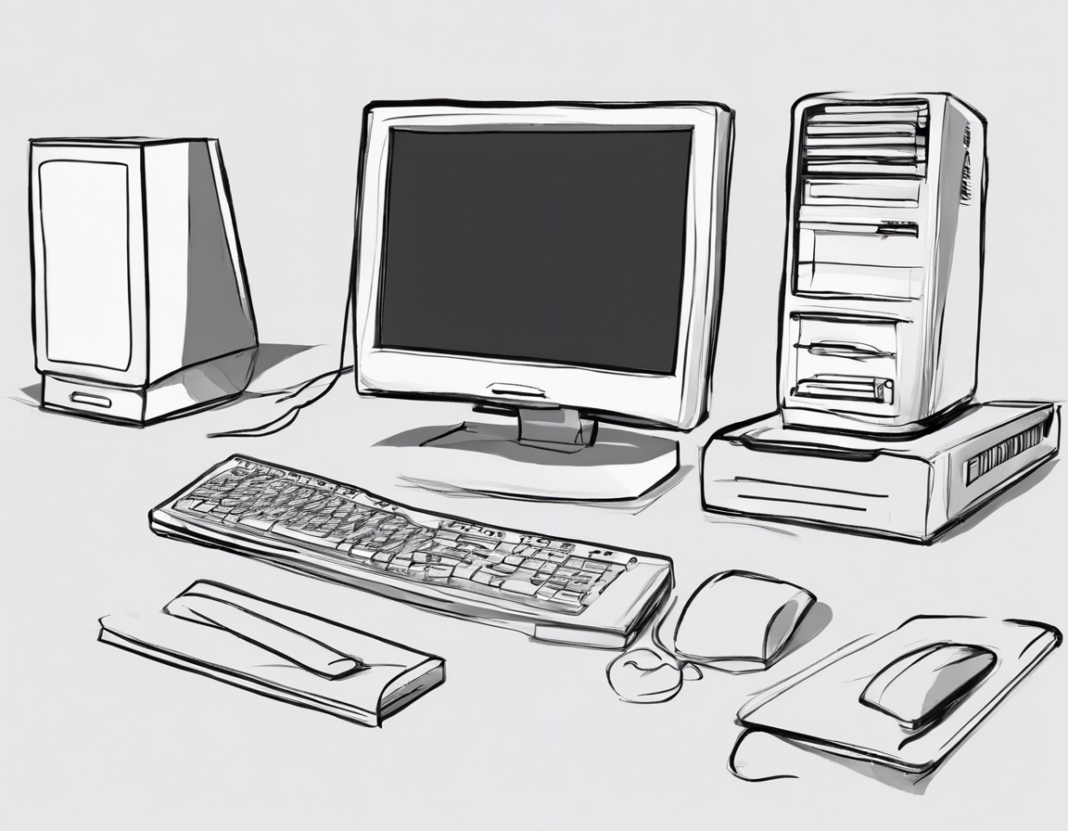As an artist or designer, illustrating a computer can be a creative and engaging project. Whether it be for a graphic design piece, a technical manual, a children’s book, or simply for personal enjoyment, drawing a computer requires attention to detail and precision. This step-by-step guide will walk you through the process of drawing a computer, breaking it down into manageable components to help you create a realistic and visually appealing illustration.
Materials Required:
- Paper
- Pencil
- Eraser
- Ruler
- Colored pencils or markers (optional)
Step 1: Sketching the Basic Shape
- Start by sketching a rectangle to represent the main body of the computer. This will serve as the foundation for your illustration.
- Add smaller rectangles on top of the main shape to symbolize the monitor and keyboard.
Step 2: Adding Detail to the Monitor
- Within the monitor rectangle, draw a smaller rectangle to indicate the screen.
- Add buttons, a logo, or a power indicator to bring the monitor to life.
- Outline the edges of the monitor to give it a sleek and modern appearance.
Step 3: Creating the Keyboard
- Draw a grid of square or rectangular shapes to represent the keys on the keyboard.
- Add details such as letters, numbers, or symbols on each key to make it look realistic.
- Include a touchpad or mouse near the keyboard if desired.
Step 4: Designing the CPU (Central Processing Unit)
- Draw another rectangle next to the monitor to depict the CPU tower.
- Add texture or patterns to distinguish the front panel of the CPU.
- Include ports, buttons, and ventilation holes to add authenticity to your drawing.
Step 5: Adding Finishing Touches
- Erase any unnecessary lines and refine the shapes of the computer components.
- Add shading to create depth and make certain parts stand out.
- Consider adding color to enhance the overall appearance of the computer illustration.
Frequently Asked Questions (FAQs):
1. What is the best way to practice drawing a computer?
Practice drawing basic shapes and objects first to improve your overall drawing skills. Once you feel comfortable with that, try sketching computers from different angles to enhance your perspective drawing abilities.
2. How can I make my computer drawing more realistic?
Pay attention to details such as textures, reflections, and shadows. Study real computers or reference images to understand how light interacts with different surfaces and components.
3. Should I use a pencil or a digital tool for drawing a computer?
It depends on your preference and expertise. Pencils offer a traditional feel and allow for easier shading, while digital tools provide flexibility and editing capabilities. Experiment with both to see which one suits you best.
4. How can I add a background to my computer illustration?
Consider placing the computer on a desk, in a room, or against a plain backdrop to provide context to your drawing. Pay attention to perspective and lighting to integrate the computer seamlessly into the scene.
5. Are there any specific techniques for drawing complex computer components like circuit boards or wiring?
Break down complex components into simpler shapes and focus on one section at a time. Use reference images or diagrams to understand the details of each part and gradually build up the entire illustration.
Drawing a computer can be a rewarding artistic endeavor that allows you to showcase your creativity and technical skills. By following this step-by-step guide and practicing regularly, you can master the art of drawing computers and create stunning illustrations for various projects.
